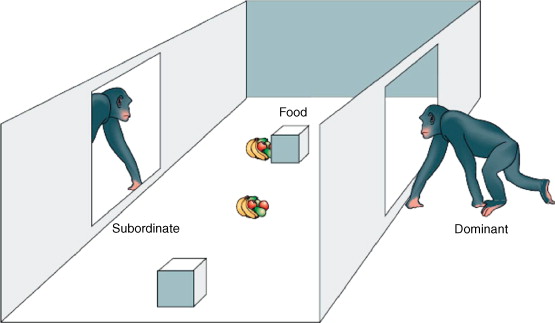
Title: Ape Empathy: Consolation Behaviors in Bonobos and Chimpanzees Challenge Long-Standing Beliefs
Have you ever offered comfort to a friend following a rough day? Shared a hug, taken their hand, or simply provided a calming presence? It appears that empathy is not a trait exclusive to humans. A revolutionary new study indicates that our nearest living kin — bonobos and chimpanzees — also express concern for their companions in strikingly similar ways.
This astonishing finding disrupts decades of beliefs about the emotional experiences of apes, illuminating the roots of empathy and social behavior in humans.
Redefining Ape Misconceptions
Published in the journal Evolution and Human Behavior, the collaborative study conducted by researchers from Durham University challenges the long-accepted portrayal of bonobos as inherently more empathetic than chimpanzees. Bonobos have traditionally been celebrated as the “hippie apes,” known for their harmonious and cooperative social interactions, while chimpanzees have often been depicted as more hostile and competitive.
However, Dr. Jake Brooker, who spearheaded the research, argues that this stereotyping fails to capture the full picture. “For many years, bonobos have been viewed as the more empathetic ape, while chimpanzees are often characterized as the aggressive, tyrannical ape,” Dr. Brooker explained. “Our findings reveal that chimpanzees are equally capable of consoling one another as bonobos.”
Consolation as Insight into Empathy
The study monitored 90 great apes — 40 bonobos and 50 chimpanzees — for over 1,400 hours across two prominent African sanctuaries: Lola ya Bonobo in the Democratic Republic of Congo and Chimfunshi Wildlife Orphanage in Zambia. These sanctuaries provide natural habitats for rescued and rehabilitated apes, many of whom are orphans.
The researchers meticulously recorded the apes’ responses to troubled group members, particularly following conflicts. “Consolation” behaviors included gentle touches, hugs, hand-holding, and other comforting gestures. Such actions are seen as strong indicators of empathy — the capability to recognize and react to the emotional conditions of others.
Key Findings: Empathy Comes in Many Forms
Among the most intriguing discoveries:
– Bonobos and chimpanzees exhibited consolation behaviors at nearly equivalent rates.
– Younger apes in both species were more inclined to provide or receive comfort compared to older apes.
– In chimpanzees, young males and those with strong social ties were the most frequent sources of consolation.
– In bonobos, empathy appeared to be more evenly spread, particularly with younger apes actively providing emotional support.
Significantly, individual apes displayed distinct personalities, with some consistently more nurturing and responsive than others, independent of species. “Similar to humans, bonobos and chimpanzees may flexibly express empathy based on the individual, the group, and their social context,” said Dr. Brooker.
Implications for Human Evolution
Professor Zanna Clay, who oversaw the study, emphasizes the broader implications of these results. “Although empathy plays a crucial role in our own species, our findings indicate that empathic behaviors, such as consolation, seem to be a shared characteristic with our two closest ape relatives,” she stated.
This discovery supports the notion that empathy developed long before the emergence of Homo sapiens. If both bonobos and chimpanzees — who diverged from a common ancestor approximately 2 million years ago — demonstrate this trait, it is plausible that their last shared ancestor with humans (around 6–7 million years ago) also possessed early elements of empathy.
Essentially, when you comfort a friend after a trying moment, you are engaging in a behavior deeply rooted in our evolutionary heritage. This shared ability for empathy reinforces the profound social and emotional connections between humans and other great apes.
What’s Next?
The researchers plan to extend their observations to wild ape populations. While sanctuaries provide semi-natural social environments, wild groups may exhibit varied behaviors influenced by their specific ecological and social contexts.
Over the long term, these studies could yield valuable insights into not just the lives of apes but also the origins of human kindness, collaboration, and emotional intelligence.
Conclusion: A Shared Legacy of Compassion
This enlightening research serves as a reminder that empathy is not exclusively a human characteristic. Rather, it is part of a rich, evolutionary narrative that connects us to great apes and likely extends back millions of years. So, the next time you offer a shoulder to lean on or give a comforting hug, realize that you are taking part in an ancient tradition — one that binds us to our closest animal relatives in the most human manner.
—
Discover more from Wild Science
Subscribe to get the latest posts sent to your email.
—
Source: Evolution and Human Behavior – Read the full study here.